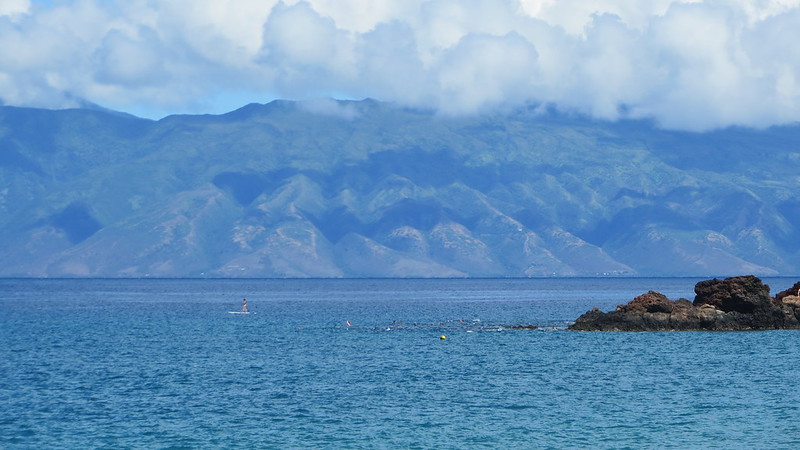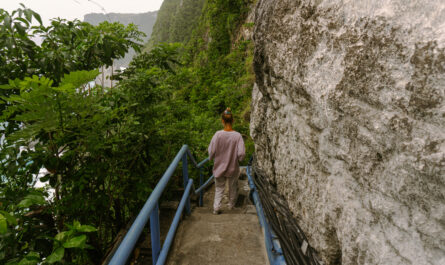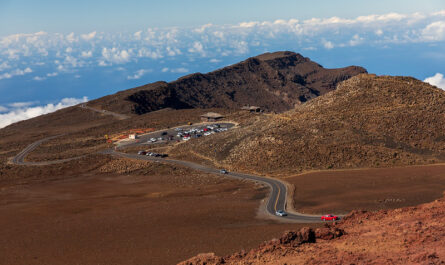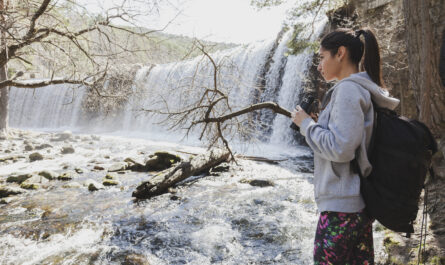The Road to Hana, a legendary 64.4-mile stretch of highway along the northeastern coast of Maui, is considered one of the most scenic drives in the world. With its lush rainforests, cascading waterfalls, tropical landscapes, and coastal views, the journey offers visitors an unforgettable experience. Unlike other drives, the Road to Hana is about more than reaching the destination—it’s a journey that immerses you in Maui’s rich natural beauty and vibrant culture. Along the way, travelers encounter winding roads, towering cliffs, and some of the most stunning natural wonders Hawaii has to offer.
This guide will take you through the highlights of the Road to Hana, sharing tips for a smooth experience while exploring its scenic, cultural, and historical treasures.
1. History and Cultural Significance
The Hana Highway, as it’s formally called, is more than just a scenic route; it is steeped in Hawaiian history and tradition. Originally, the road connected isolated communities along the eastern coast of Maui, providing them with essential access to the island’s resources. Over time, the route became a vital lifeline for locals, connecting people not only geographically but also culturally.
In ancient Hawaiian culture, the road passed through lands ruled by ali’i (chiefs) and traversed areas with sacred sites. Even today, many areas along the Road to Hana hold deep cultural significance. Visitors are encouraged to embrace Hawaiian cultural values such as mālama ka ‘āina (caring for the land) and respect for kapu (sacred places) while exploring.
2. Preparing for the Journey
Before embarking on the Road to Hana, it’s essential to prepare for the unique challenges of the trip. The road consists of 620 sharp curves and 59 narrow bridges, many of which are one-lane only. Because of this, it’s crucial to drive slowly and cautiously. Though the drive from Kahului to Hana can take approximately two to three hours without stops, it’s recommended to plan a full day to take in all the sights.
Packing the essentials is a must. Since food and gas stations are sparse, bringing snacks, water, and full tanks of gas is highly recommended. Additionally, wear comfortable clothing and footwear suitable for hiking and swimming, as many of the road’s highlights include trails and natural pools.
3. Scenic Stops Along the Way
Pa’ia Town
Your journey begins in the small town of Pa’ia, a charming seaside village known for its laid-back vibe and colorful storefronts. Pa’ia is a great spot to grab a bite to eat before starting your drive. The town also boasts boutique shops, local art galleries, and cafes where you can pick up snacks or picnic supplies for the road ahead.
Twin Falls
A short drive past Pa’ia brings you to one of the first iconic stops: Twin Falls. Located at mile marker 2, Twin Falls is the perfect introduction to Maui’s tropical beauty. Here, visitors can take a short walk through lush forest to reach a pair of cascading waterfalls that flow into natural pools. Swimming is permitted, and it’s a refreshing way to start your adventure.
Garden of Eden Arboretum
At mile marker 10, the Garden of Eden Arboretum is a 26-acre botanical garden offering stunning views of the island’s flora and fauna. The garden features native Hawaiian plants, towering eucalyptus trees, bamboo groves, and panoramic vistas of the Pacific Ocean. The arboretum also offers a view of the famous Puohokamoa Falls, making it a worthwhile stop for nature lovers and photographers.
Ke’anae Peninsula
Around mile marker 16, the road passes the Ke’anae Peninsula, a historic Hawaiian village surrounded by dramatic black lava rock formations and turquoise waves. The peninsula is known for its taro farms, where locals still cultivate the root vegetable used to make poi, a staple in traditional Hawaiian diets. The small village provides a glimpse into the island’s agricultural past and the power of the Pacific Ocean, as waves crash against the jagged coastline.
Wailua Falls
Arguably one of the most beautiful waterfalls along the Road to Hana, Wailua Falls is located at mile marker 45. Towering at 80 feet, this stunning waterfall is easily accessible and can be admired from the side of the road. For those willing to explore, a short hike brings you closer to the falls, where you can swim in the cool freshwater pool beneath the cascade.
Hāna Town
After hours of winding through lush landscapes and scenic stops, you’ll arrive in Hāna, a peaceful town that feels worlds away from the more touristy areas of Maui. Hāna is known for its quiet charm, Hawaiian culture, and unspoiled natural beauty. While in Hāna, you can visit Hana Bay Beach Park, where the black sand beach provides a serene setting for relaxation and picnics.
Another point of interest in Hāna is Hāna Cultural Center and Museum, which offers insights into the local history, showcasing artifacts and exhibits about traditional Hawaiian life, from ancient times to the plantation era.
4. Beyond Hāna: The Seven Sacred Pools and Pipiwai Trail
For those who continue past Hāna, the journey leads to some of the most breathtaking attractions on the island.
Seven Sacred Pools (Ohe’o Gulch)
Located within Haleakalā National Park at mile marker 42, the Seven Sacred Pools, also known as Ohe’o Gulch, are a series of cascading waterfalls and natural pools set against the backdrop of dense rainforests. Visitors can swim in these tranquil pools or take a hike along the surrounding trails for incredible views of the waterfalls.
Despite the name, the pools are not considered sacred by the Hawaiian people—this was a moniker created to attract tourists. However, their beauty is undeniable, and they remain one of the most popular stops along the road.
Pipiwai Trail
One of the highlights beyond Hāna is the Pipiwai Trail, a 4-mile round-trip hike that takes visitors through diverse landscapes, including a stunning bamboo forest. The trail leads to Waimoku Falls, a 400-foot waterfall that is one of the tallest on the island. The hike offers a unique chance to see native flora, including towering bamboo stalks that create a serene and almost otherworldly atmosphere.
5. Natural Wonders and Hidden Gems
In addition to the popular stops along the Road to Hana, there are countless hidden gems and lesser-known wonders to discover. Among these are Red Sand Beach (Kaihalulu Beach), which is located just past Hāna town. The red sands of this secluded cove contrast starkly with the deep blue waters of the Pacific, making for a striking landscape.
Similarly, Waianapanapa State Park is known for its dramatic black sand beach, coastal trails, and sea caves. The park offers opportunities for camping, picnicking, and swimming, all while surrounded by pristine nature.
6. Driving Tips and Safety
Due to its narrow lanes and sharp curves, the Road to Hana can be challenging for some drivers. It’s important to stay cautious, yield at one-lane bridges, and be patient with other drivers. The road is not meant for speeding, and the slower pace allows you to take in the surroundings.
For those who prefer not to drive, guided tours are available and offer the convenience of relaxing while knowledgeable local guides share the history, culture, and stories of the Road to Hana.
7. Embracing the Journey, Not Just the Destination
The Road to Hana is about more than just reaching the final destination of Hāna—it’s about experiencing the journey. The route itself is a celebration of Maui’s natural beauty, showcasing rainforests, waterfalls, beaches, and rugged coastlines that are unique to this part of the island. Each stop along the way offers an opportunity to immerse yourself in the island’s landscapes, culture, and history.
Visitors are encouraged to take their time, stop often, and savor the experience. Whether it’s swimming in a freshwater pool, hiking through a bamboo forest, or simply standing in awe of the views, the Road to Hana is a reminder that the journey is just as important as the destination.
Conclusion: An Unforgettable Adventure
The Road to Hana is one of the most iconic road trips in the world, and for good reason. It offers a perfect balance of adventure, natural beauty, and cultural exploration. From towering waterfalls and verdant rainforests to historic villages and scenic beaches, every mile of the road is filled with opportunities to connect with the heart and soul of Maui.
For travelers looking to experience the true spirit of Hawaii, the Road to Hana provides a journey like no other. It’s an adventure that will leave you with lasting memories of one of the most beautiful corners of the world.



